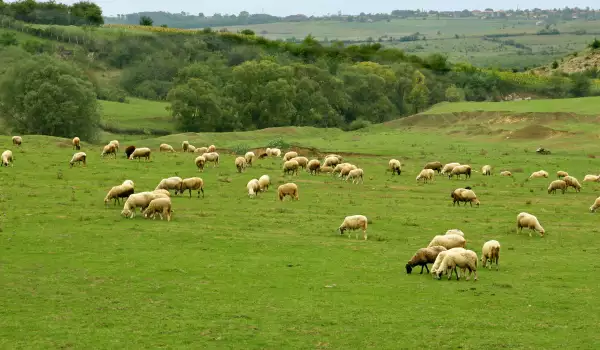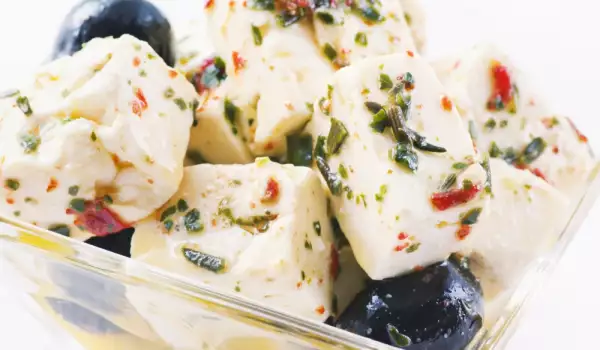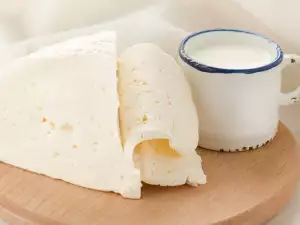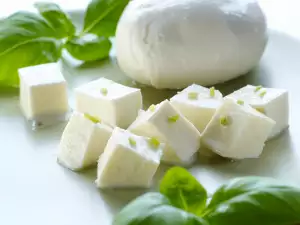Feta is a white cheese, traditionally made in Greece. In fact, 75% of the cheeses eaten there are of this type. Sheep's milk is its main component but goat milk is also included at times. In general, feta is characterized by its relatively crumbly texture. This type of cheese is widely used in cuisine and can be eaten on its own or with other food products.
History of Feta
It is thought that the Greek word for the cheese, "φέτα", originates from the Italian word fetta, which means "piece". It, in turn, comes from the Latin word offa, meaning "bite" or "piece". The term was introduced to the Greek language 4 centuries ago and was most likely inspired by the practice of cutting the cheese into pieces before letting it age in barrels.
It appears that feta has a centuries' long history. As early as the 7th century BC, the Greeks prepared a similar dairy product from sheep's and goat's milk. The technique which shepherds trusted back then provided the foundation for the cheese production in modern days. Since at the time the Greeks were unfamiliar with pasteurization, they would heat fresh milk in the sun. Then they would place the resulting soft consistency in a light fabric cloth and squeeze to drain out the liquid and harden the product.

Later, they would cut the cheese, salt it and leave it in a dry area for several days. The Greeks stored the resulting cheese in wooden barrels and covered it with brine. After about a month, the cheese would be ready for consumption. Another technique that was developed called for storing the feta in olive oil. That would make the cheese less saltier than the other and give it a more gentle flavor. Cheese made from goat's milk was among the favored foods in ancient Greece.
Eventually it became an indispensable part of the local cuisine. The brine product very quickly gained popularity in Southeastern Europe. It spread to Bulgaria, Croatia, Romania, Turkey, Israel, Egypt and other places. Nowadays, feta is aged around 3 months. The fat content varies between 30 and 60%. There are 3 known types of feta - one made from sheep's milk, one made according to the traditional technique but from cow's milk or another with a different texture.
Composition of Feta
Feta is a cheese rich in healthy substances. It contains saturated fat, polyunsaturated fat and monounsaturated fat. The brine cheese also has alanine, arginine, aspartic acid, valine, glutamic acid, lysine, proline, serine, cysteine, tyrosine and others. Feta is known for being a source of calcium, iron, phosphorus, magnesium, zinc, copper, selenium, manganese.
We can also obtain vitamin A (retinol), vitamin B1 (thiamine), vitamin B2 (riboflavin), vitamin B3 (niacin), vitamin B4 (choline), vitamin B5 (pantothenic acid), vitamin B6 (pyridoxine), vitamin B9 (folic acid) vitamin B12 (cyanocobalamin), vitamin D (calciferol), vitamin E (tocopherol), vitamin K (phylloquinone) from the cheese.
Cooking with Feta
The semi-hard Greek cheese is commonly used in Greek cooking. Thanks to its pleasant taste and delicate flavor, it easily finds use in the cuisines of many other countries as well. As already mentioned, feta can be served on its own or combined with other foods. The cheese is so enchanting that even if you eat it with a just a bite of freshly baked bread and a cup of red wine, you'll feel as though you are eating an exquisite specialty.

Combining white brined cheese with tomatoes, pickles, peppers, onions, olives, garlic, lettuce, radishes is a fine choice. Just pour on a little olive oil. If you would like dishes a bit more filling, you can combine the cheese with fish, various seafood or meat. Or add it to an omelet or potato bake.
The cheese can be successfully put into pitas, steaks, breads and phyllo pastries. Phyllo pastry with feta and spinach is extremely popular in Greek cuisine. Other chefs prefer to combine feta with fruits. They use sweet grapes, watermelon or figs. Its culinary properties can be further enriched with savory spices such as oregano, rosemary, mint, paprika and black pepper.
Let us now offer you a salad with feta cheese that is super quick to make.
Ingredients: 7 oz feta cheese, 15 black olives (pitted), 5.5 oz spinach, 1 avocado, 10 cherry tomatoes, 1 bunch fresh garlic, 20 pumpkin seeds (peeled), black pepper, salt, olive oil, lemon juice.
Preparation: Wash and clean all of the green ingredients. In a bowl, put the chopped spinach, cherry tomatoes, avocado, garlic. Add the olives. Dice the feta and add it too. Sprinkle on the pumpkin seeds and season with the spices. Toss the salad and serve.
Benefits of Feta
Eating feta is good both for our body and outer appearance, since the cheese contains loads of micronutrients that keep us healthy. The vitamins we can obtain from the brine product are crucial for our beauty and the health and radiance of our skin, hair and nails.
Dangers of Feta
Eating too much feta is of course, not a good idea. Because of the high fat content, nutritionists advise obese people to avoid it. People suffering from hypertension and kidney diseases should also refrain from eating it.




















Comments